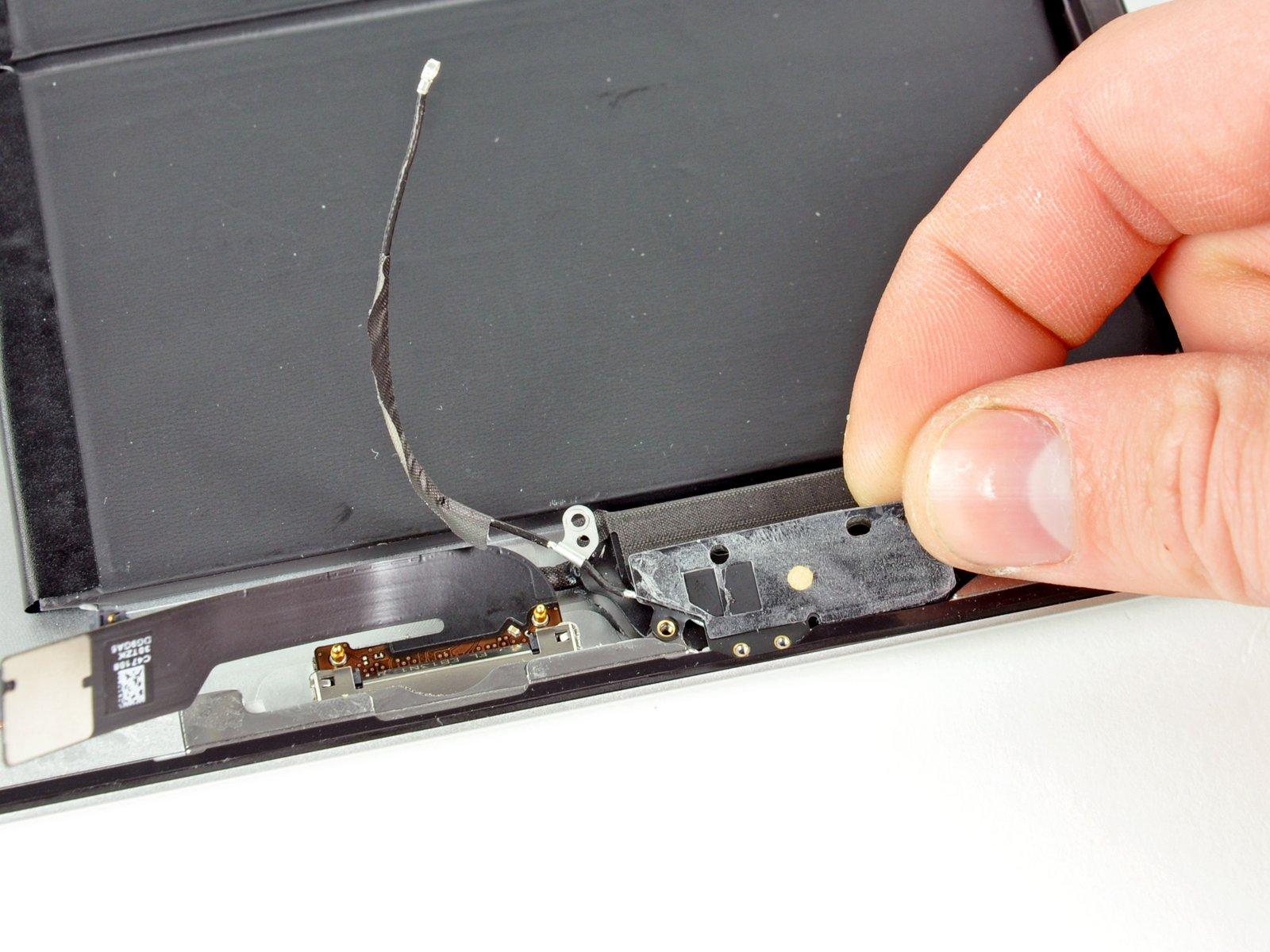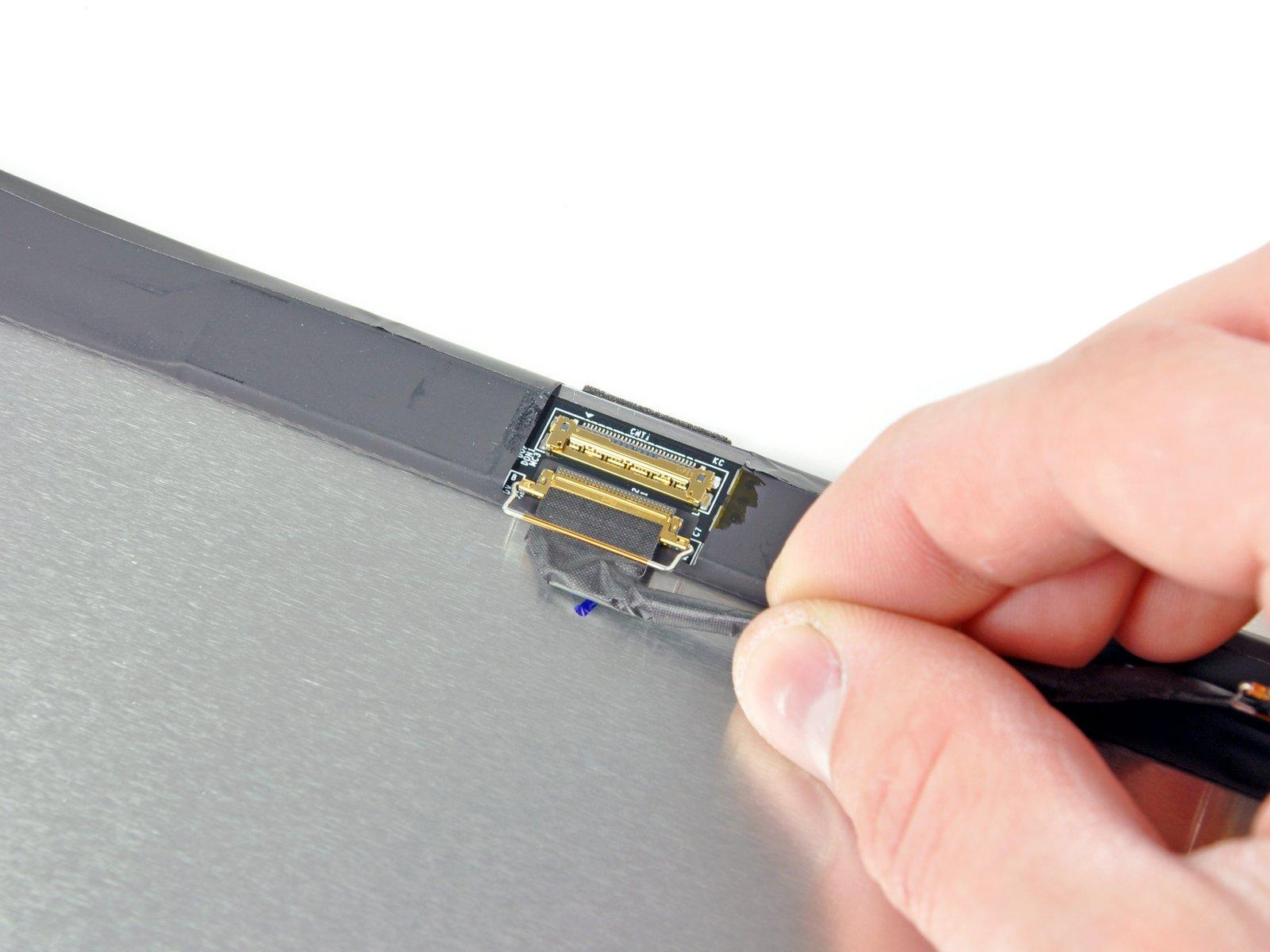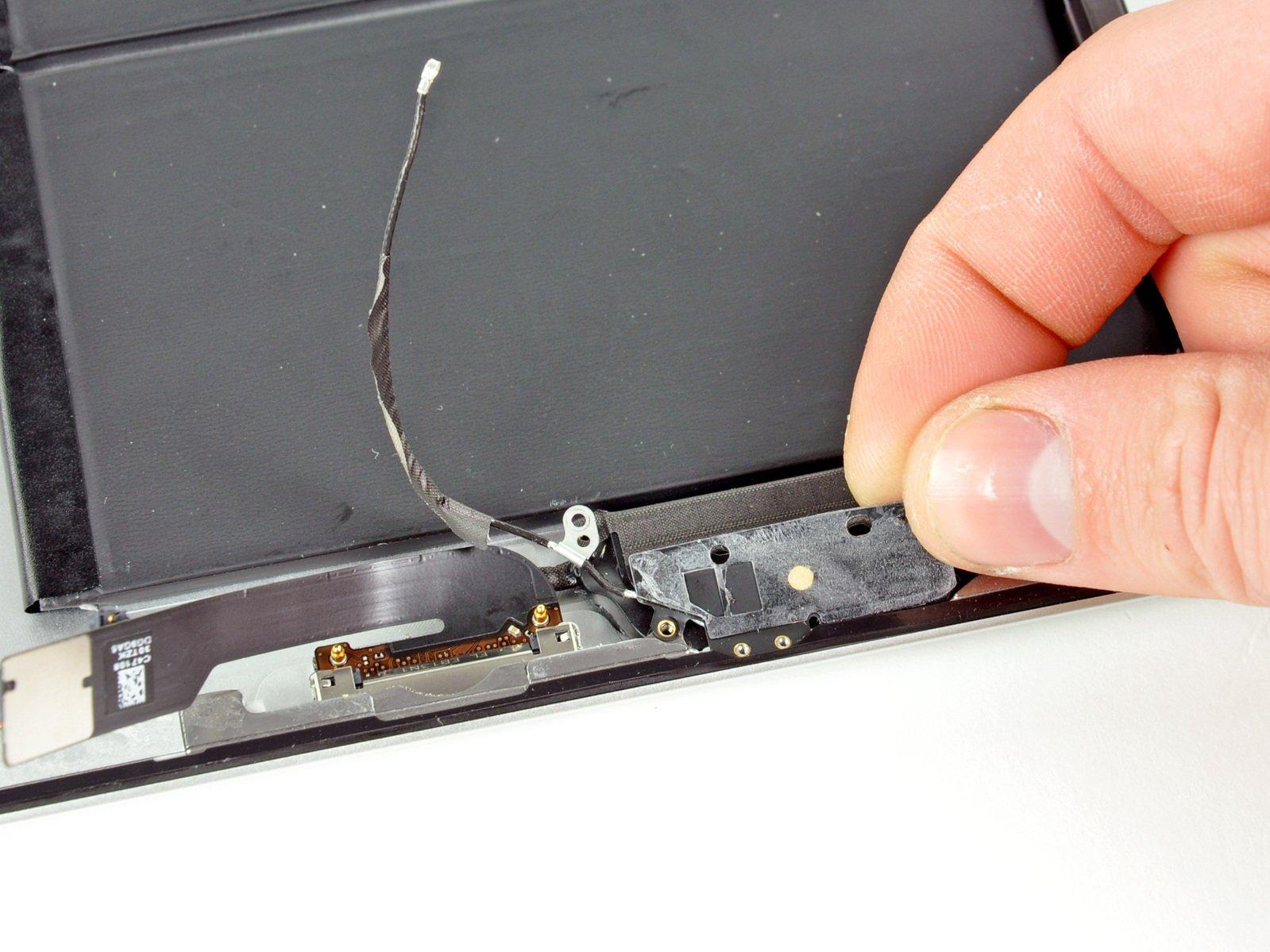How to Replace iPad 2 Wi-Fi EMC 2560 Home Button Control Board
Duration: 45 minutes
Steps: 35 Steps
Hey there! Just a friendly reminder: take it easy and make sure to keep your workspace tidy. If you run into any hiccups, remember that help is just a click away! You can always schedule a repair if you need a hand.
Get ready to tackle the home button control board replacement with this handy guide! It’s easier than it sounds, and we’re here to help you every step of the way. If you need help, you can always schedule a repair.
Step 1
Before diving into the repair, give your microwave a little TLC and clean it up. That pesky gunk on the bottom could stick to your iOpener and create a mess. Trust us, a clean microwave makes for a smoother repair experience!
– Set the iOpener right in the middle of the microwave.
Tools Used
Step 2
Keep an eye on that iOpener during your repair—overheating it could lead to a dramatic burst! Aim to keep it below 100˚C (212˚F).
If the iOpener looks a bit puffy, steer clear of it. Safety first!
If the center of the iOpener is still too hot to handle, no worries! Just keep using it while it cools down a bit before giving it another heat-up. A properly warmed iOpener should stay cozy for up to 10 minutes.
– Give that iOpener a warm-up in the microwave for thirty seconds. It’s like a spa day for your repair tool!
– As you work through the repair, keep an eye on your iOpener. If it starts to cool down, pop it back in the microwave for another thirty seconds to keep things nice and toasty.
Tools Used
Step 3
Caution: The iOpener is going to be pretty toasty, so handle it with care! An oven mitt can be your best buddy here if you need it.
– Carefully take the iOpener out of the microwave, grabbing it by one of the flat ends to steer clear of that toasty middle section.
Tools Used
Step 4
If a microwave isn’t in your kitchen arsenal, no worries! Just pop your iOpener in some boiling water to warm it up.
– Grab a pot or pan and fill it up with enough water to completely dunk your iOpener.
– Bring that water to a rolling boil, then turn off the heat. You got this!
– Now, gently place your iOpener into the hot water for about 2-3 minutes. Just make sure it’s fully submerged—no half measures here!
– Using some trusty tongs, carefully lift the warmed iOpener out of the hot water.
– Give your iOpener a good towel dry—nobody likes a soggy tool!
– And voilà! Your iOpener is ready to roll! If it needs a little extra heat, just repeat the process: boil the water, turn off the heat, and let the iOpener soak for another 2-3 minutes.
Tools Used
Step 5
Put on those safety glasses to keep your peepers safe, and watch out for that LCD screen—it’s more delicate than it looks!
– If your display glass is sporting a crack, let’s keep that damage in check and avoid any accidental ouchies while you get to work—grab some tape and cover that glass up!
– Layer on some clear packing tape over your iPad’s display, making sure to overlap the strips until the entire surface is securely covered. Safety first, right?
– Now, as you dive into the rest of the guide, remember that once the glass starts to break, it might just want to keep on cracking. Don’t sweat it! You might need to use a metal prying tool to help you scoop out the pieces. You got this!
Step 6
Just a friendly reminder: since you might be dealing with some sharp glass during this process, we highly suggest putting on some safety glasses. Better safe than sorry when it comes to those pesky flying shards!
– Place the iOpener flat against the right edge of your iPad, making sure it’s nice and cozy with the surface for optimal warmth.
– Give it about 90 seconds to work its magic before you dive in and try to pop open that front panel.
Tools Used
Step 7
Getting that trusty opening tool in between the glass and plastic might need a little elbow grease! Take your time and be gentle. Just wiggle that plastic tool back and forth as needed, and you’ll be on your way to a successful repair.
– Look closely, and you’ll spot a tiny gap in the iPad’s adhesive ring located in the upper right corner, about 2.0 inches (~5 cm) from the top. This is your golden opportunity to get started!
– Now, let’s get to work! Position your tool so it lines up with the mute button. Gently insert the tip of a plastic opening tool into the little gap between the front glass and the plastic bezel. Just slide in the very tip of the tool, enough to create a little wiggle room.
Step 9
– With the tip of the plastic opening tool snugly positioned between the front glass and the plastic bezel, gently slide a plastic opening pick into the gap right beside the tool. You’re on the right track!
Step 10
– Take that trusty plastic opening tool out of the iPad, and slide the opening pick a little deeper under the front glass—aim for about 0.5 inches. You’ve got this!
Step 12
This adhesive is super strong, so you might need to put in a little elbow grease. Just take your time and be gentle!
If you catch a glimpse of the opening pick peeking out from beneath the front glass, gently pull it out a smidge. While it’s totally safe to use the pick this deep, it might leave a little adhesive residue on the LCD. Just a heads up!
– As you warm up the bottom edge with the iOpener, start working on loosening the adhesive from the right side of your iPad.
– Gently glide the opening pick down along the edge of the iPad, and watch that adhesive release like magic!
Tools Used
Step 13
As you peel away the adhesive, you might find it helpful to reposition the warm iOpener back onto the right edge of the iPad. This little adjustment can make all the difference, especially if your iPad has had a chance to cool down a bit while you’ve been working your magic.
– If the opening pick gets a bit stuck in the adhesive, just give it a little roll along the side of the iPad to keep loosening that sticky stuff. You’re doing great!
Tools Used
Step 14
– Before you pop out that first opening pick from the bottom corner of your iPad, slide a second pick under the right edge of the front glass to keep the adhesive from sticking again. We don’t want any clingy moments here!
– Give your iOpener a little reheating love, then place it at the top edge of the iPad. Let’s keep this repair journey smooth and breezy!
Tools Used
Step 15
The Wi-Fi antenna is snugly fastened to the bottom right edge of the iPad’s rear case with screws and a cable. Given the way the Wi-Fi antenna is positioned, it’s super important to be careful during this process to avoid any permanent hiccups to the antenna. Stay sharp and proceed with caution!
– Alright, folks! Time to tread carefully in the next few steps.
– You’ll need to gently loosen the adhesive that’s holding the antenna to the front panel, but be super careful not to damage the delicate bits connecting the antenna to the bottom of your iPad. Just take it step by step, and you’ll do great!
Step 16
Hey there! Just a quick reminder: steer clear of sliding the pick too far past the bottom right corner. It’s a sneaky spot that could give the Wi-Fi antenna a little too much love, and we definitely don’t want that!
– Gently slide the opening pick around the bottom right corner of the iPad to free up that stubborn adhesive. You’ve got this!
Step 17
As you glide the opening pick along the bottom right edge of the front panel, be mindful of the Wi-Fi antenna snugly tucked in the corner. It’s a delicate little thing and can easily get snipped if the adhesive is handled carelessly. Stay sharp and keep it safe!
Just a little tip: don’t yank that pick all the way out from under the front glass! Pull it out just enough so that about 1/8″ (3 mm) of the tip is still cozy under there.
– Gently glide the edge of your trusty opening pick along the bottom of the iPad, waving goodbye to the adhesive that’s holding onto the Wi-Fi antenna.
Step 18
– After you’ve navigated past the Wi-Fi antenna, which is about 3″ (75 mm) from the right edge or just a smidge beside the home button, gently slide the opening pick back in all the way.
– Now, give that pick a little nudge to the right to free the adhesive that’s holding the Wi-Fi antenna to the front glass. You’re doing great!
Step 19
Keep the iOpener’s heating sessions short and sweet—no more than a minute at a time! And don’t forget to give it a little break of at least two minutes before you heat it up again.
If the adhesive has cooled down a bit too much along the bottom edge, just give the iOpener another warm-up to get that sticky goodness back to where you need it.
– Keep working that adhesive loose along the bottom of your iPad, and when you’re ready, gently pull the opening pick out far enough to glide around the home button. Then, pop it back in, going about 1/2 inch (10 mm) deep once you’ve passed the home button. You’ve got this!
Tools Used
Step 20
– Keep peeling away that adhesive all along the bottom edge of the iPad like a pro.
– Once you’ve made some progress, pop that opening pick right under the front glass near the home button and let it chill there.
Step 22
If the adhesive has cooled off a bit too much, just swap in a fresh iOpener along the top edge and keep at it! And if your iOpener is feeling a little chilly, give it a reheat and you’re back in business!
– Gently slide the opening pick along the top edge of your iPad, giving it a little pull to navigate around the front-facing camera bracket.
– The adhesive here is quite stubborn, so you might need to apply a bit of muscle. Just remember to take it slow and steady—no one wants an accidental slip that could lead to a mishap with your iPad!
– If the pick is feeling a bit stuck in the adhesive, try ‘rolling’ it like we demonstrated in step 9.
Tools Used
Step 23
If your adhesive is feeling nice and toasty, go ahead and take that iOpener off the iPad for a smoother experience. But if the sticky stuff is still giving you a hard time, just give the iOpener another heat-up and set it on the left edge while you dive into the repair.
– Keep peeling away that sticky stuff along the top edge of the iPad, then gently slide your opening pick around the top left corner. Smooth moves will get you through this!
Tools Used
Step 24
The digitizer cable is hanging out about 2 inches (50 mm) from the bottom of the iPad. So, when you’re sliding that pick, just stop when you reach around 2.25 inches (60 mm) from the bottom. Keep it steady and you’ll be golden!
– Gently glide that opening pick along the left side of your iPad, peeling away the adhesive as you go. The adhesive is pretty thin here thanks to the digitizer running along the entire left edge. Just a friendly reminder: keep the pick at a max depth of 1/2 inch (10 mm) to avoid any mishaps with the digitizer. You’re doing great!
Step 25
Be extra gentle here! The bottom of the digitizer cable is hanging out just about an inch (25 mm) from the bottom of the iPad. Take your time and be careful not to accidentally snip this cable!
– With the trusty opening pick still nestled under the bottom edge of your iPad, gently pry up the adhesive at the bottom left corner. You’ve got this!
Step 26
– Grab one of those handy opening picks and gently nudge the bottom right corner of the iPad up. Once it’s lifted, use your fingers to hold it steady.
Step 27
Watch out for any leftover adhesive that might still be hanging on, and grab an opening pick to slice through any sticky bits keeping the front panel in place.
– Grab your iPad by the top and bottom right corners, and gently twist that front glass away from the device. Easy peasy!
– When putting everything back together, don’t forget to give that LCD a little love with a microfiber cloth and some compressed air to banish any dust bunnies or fingerprints before sealing it up with the glass.
Step 28
– Take out those four 2.0 mm Phillips screws that are keeping the LCD snugly attached to the rear case. You’ve got this!
Step 29
The front panel ribbon cables are tucked away under the LCD. To reach them, just give the LCD a gentle flip to the side for a moment.
– Gently lift the LCD from its long edge closest to the volume buttons and flip it out of the rear case, just like you would turn a page in a book.
– Now, carefully place the LCD face down on the front panel.
Step 30
Remember to gently lift the hinged retaining flaps, not the sockets themselves. You’ve got this!
Check out the second picture where the retaining flaps are marked in a vibrant red. They’re your best friends in this repair adventure!
– Gently use the edge of a plastic opening tool to lift up the retaining flaps on the two digitizer ribbon cable ZIF sockets. You’ve got this!
Step 31
– Grab your trusty plastic opening tool and gently slide it along the edge to lift that digitizer cable off the shields on the logic board. Easy peasy!
– Now, take your time and carefully peel that digitizer cable away from the adhesive holding it snugly to the side of the rear case. You’ve got this!
Step 32
– Gently wiggle and pull the digitizer ribbon cable straight out of its two cozy homes on the logic board. You’ve got this!
Step 33
To get that front panel assembly off, you’ll need to gently slide the ribbon cable out from between the case and the LCD. Just give the LCD a little nudge to create some extra wiggle room. You’re doing great!
– Gently lift the LCD from the long edge that’s farthest from the digitizer cable and flip it toward the rear case—think of it like closing a book with a little flair.
– While you’re holding the LCD up, carefully slide the front panel away from the iPad. Just be cautious not to let the digitizer cable catch on the rear case or the LCD.
Step 34
– Unscrew the two 2.1 mm Phillips #00 screws that are holding the home button control board snugly in place on the home button assembly. You’ve got this!
Step 35
– Grab your trusty spudger and gently nudge the home button control board off its cozy little mounts on the front panel.
– Now, lift and say goodbye to the home button control board as you remove it from the front panel assembly.
Tools Used








































































